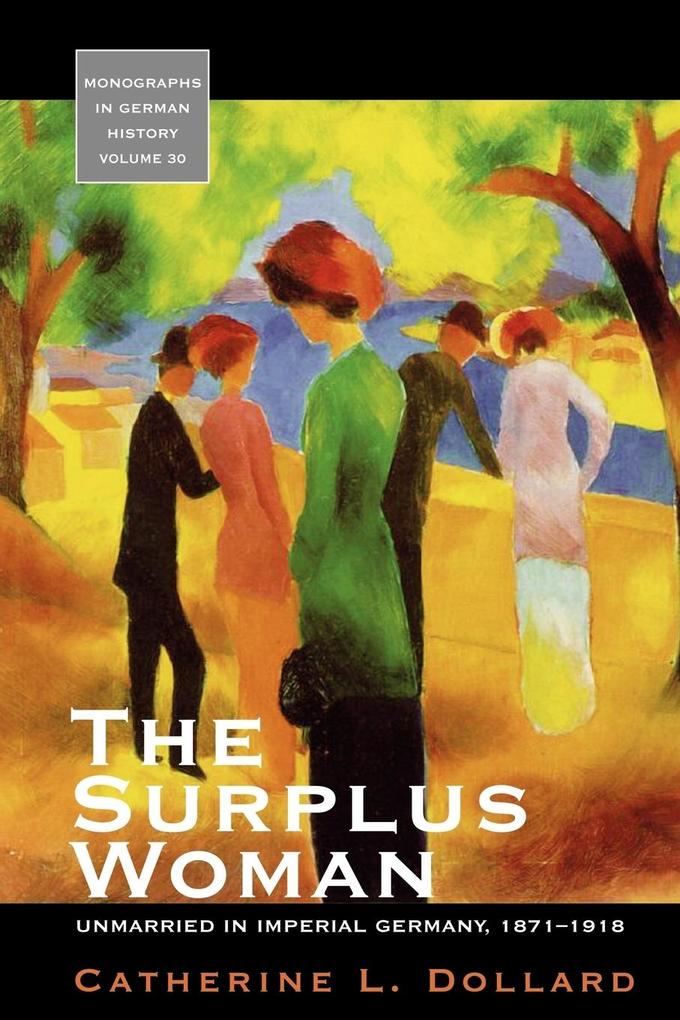
Zustellung: Di, 08.07. - Fr, 11.07.
Versand in 5 Tagen
VersandkostenfreiBestellen & in Filiale abholen:
The first German women's movement embraced the belief in a demographic surplus of unwed women, known as the Frauenüberschuß, as a central leitmotif in the campaign for reform. Proponents of the female surplus held that the advances of industry and urbanization had upset traditional marriage patterns and left too many bourgeois women without a husband. This book explores the ways in which the realms of literature, sexology, demography, socialism, and female activism addressed the perceived plight of unwed women. Case studies of reformers, including Lily Braun, Ruth Bré, Elisabeth Gnauck-Kühne, Helene Lange, Alice Salomon, Helene Stöcker, and Clara Zetkin, demonstrate the expansive influence of the discourse surrounding a female surfeit. By combining the approaches of cultural, social, and gender history, The Surplus Woman provides the first sustained analysis of the ways in which imperial Germans conceptualized anxiety about female marital status as both a product and a reflection of changing times.
Inhaltsverzeichnis
Acknowledgements
Abbreviations
Introduction: Single Women in Imperial Germany
PART I: DER FRAUENÜBERSCHUß - THE FEMALE SURPLUS
Chapter 1. The Alte Jungfer
Chapter 2. Sexology and the Single Woman
Chapter 3. Imagined Demography
Chapter 4. The Maternal Spirit
PART II: ALLEINSTEHENDE FRAUEN - WOMEN STANDING ALONE
Chapter 5. Moderate Activism: Helene Lange and Alice Salomon
Chapter 6. Radical Reform: Helene Stöcker, Ruth Bré, and Lily Braun
Chapter 7. Socialism and Singleness: Clara Zetkin
Chapter 8. Spiritual Salvation: Elisabeth Gnauck-Kühne
Conclusion: The Surplus Woman
Bibliography
Index
Abbreviations
Introduction: Single Women in Imperial Germany
PART I: DER FRAUENÜBERSCHUß - THE FEMALE SURPLUS
Chapter 1. The Alte Jungfer
Chapter 2. Sexology and the Single Woman
Chapter 3. Imagined Demography
Chapter 4. The Maternal Spirit
PART II: ALLEINSTEHENDE FRAUEN - WOMEN STANDING ALONE
Chapter 5. Moderate Activism: Helene Lange and Alice Salomon
Chapter 6. Radical Reform: Helene Stöcker, Ruth Bré, and Lily Braun
Chapter 7. Socialism and Singleness: Clara Zetkin
Chapter 8. Spiritual Salvation: Elisabeth Gnauck-Kühne
Conclusion: The Surplus Woman
Bibliography
Index
Mehr aus dieser Reihe
Produktdetails
Erscheinungsdatum
01. Januar 2012
Sprache
englisch
Seitenanzahl
286
Reihe
Monographs in German History, 30
Autor/Autorin
Catherine L. Dollard
Verlag/Hersteller
Produktart
kartoniert
Gewicht
418 g
Größe (L/B/H)
229/152/16 mm
ISBN
9780857453136
Entdecken Sie mehr
Pressestimmen
"...transcends the usual analytical approach of earlier work...[and] examines a very broad spectrum of reformist, conservative, academic, socialist, feminist, and religious writers...It represents a new contribution to our understanding of the German women's movement." * Nancy Reagin, Department of Women's and Gender Studies, Pace University " - the book is engaging, exciting and challenging to read because it provides a new framework for known material. It is also well written and at times poignant, examining the contradictory worlds of single women as construct and reality and showing their place in women activists' diverse efforts to challenge and reform their society." * English Historical Review
Bewertungen
0 Bewertungen
Es wurden noch keine Bewertungen abgegeben. Schreiben Sie die erste Bewertung zu "The Surplus Woman" und helfen Sie damit anderen bei der Kaufentscheidung.

















